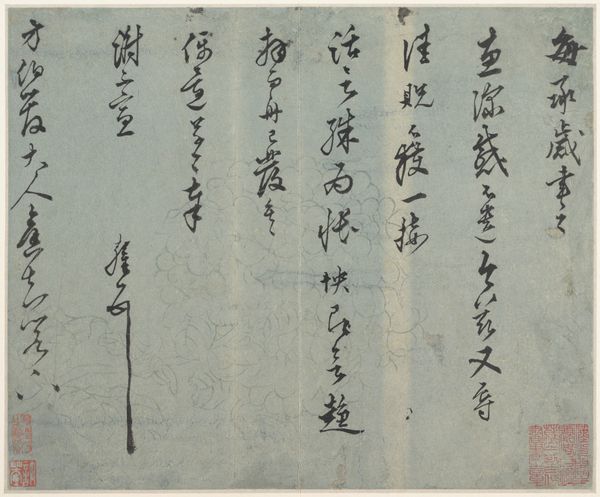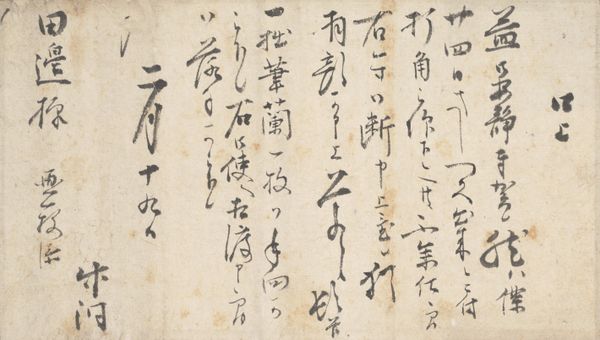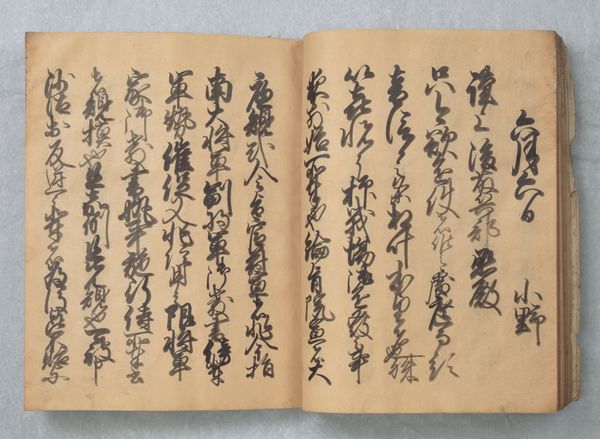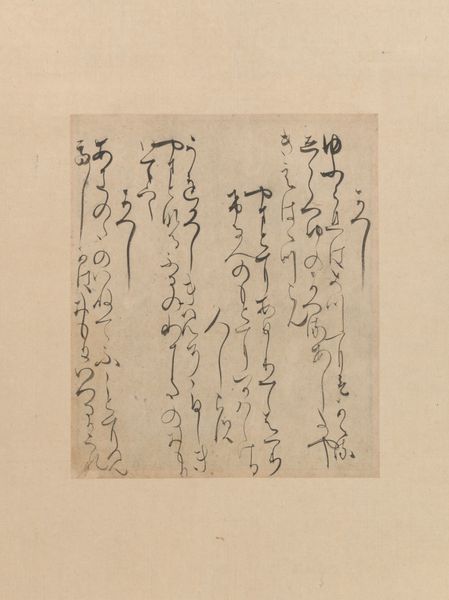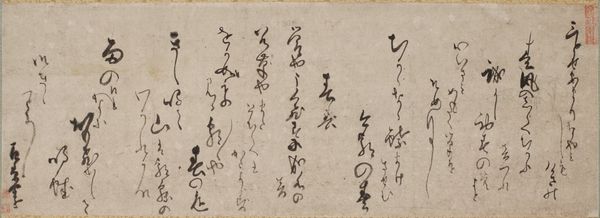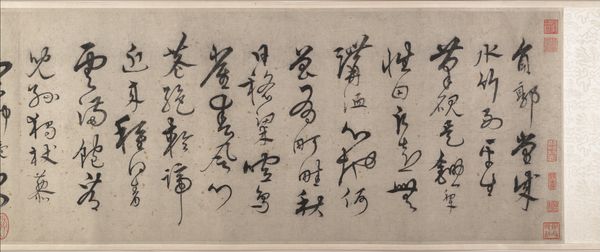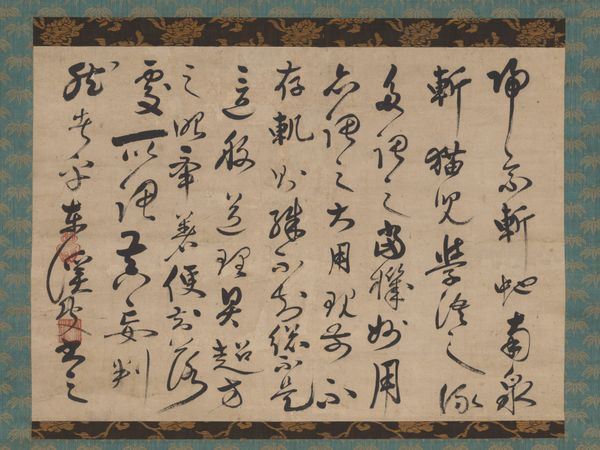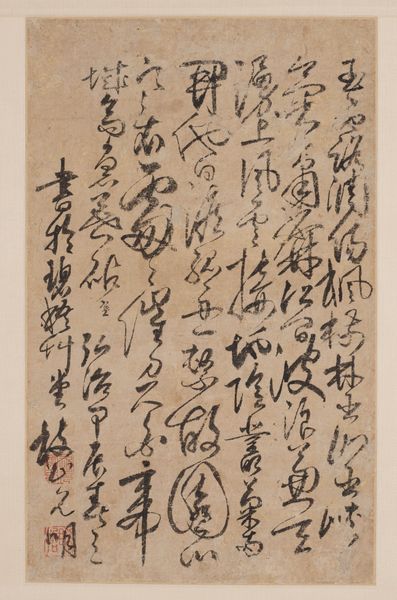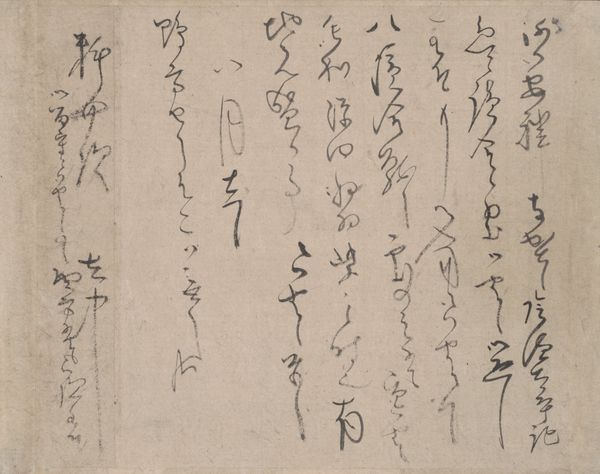
Letter to Suwa Daishin, Officer of the Shogun 1329 - 1361
0:00
0:00
paper, ink
#
medieval
#
asian-art
#
paper
#
ink
#
calligraphy
Dimensions: Image: 11 5/16 × 14 1/16 in. (28.7 × 35.7 cm) Overall with mounting: 44 1/2 × 18 1/2 in. (113 × 47 cm) Overall with knobs: 44 1/2 × 20 1/4 in. (113 × 51.4 cm)
Copyright: Public Domain
Curator: Before us we have a "Letter to Suwa Daishin, Officer of the Shogun" crafted between 1329 and 1361, attributed to Musō Soseki. It is rendered in ink on paper, a stunning example of medieval calligraphy and Asian art. Editor: Wow, there's such a delicate yet commanding presence to this. It's like I'm peeking at a secret thought, you know? I find the lines almost seem to dance before my eyes! It is beautifully imperfect in its execution. Curator: The beauty is inextricably linked to the historical context, particularly regarding socio-political influence of Zen Buddhism during the late Kamakura and early Muromachi periods. The intended recipient, the Officer of the Shogun, reflects the complex relationship between spiritual authority and military power. The exchange of letters between these figures provides vital insight to comprehend the period. Editor: Interesting! To be honest, beyond admiring its aesthetic, the figures in command never even crossed my mind. Still, the weight and energy captured is something very profound here—do you get that? Almost makes one wonder about the content, or perhaps lack of trust. Curator: Indeed. Interpreting the calligraphy unlocks further meaning by contextualizing the role that monasteries, like the one that Soseki headed, occupied at the time. Its beautiful gestural strokes reflect both spiritual and practical applications in shaping governance and personal interaction. Editor: So much implied! I keep imagining what these calligraphic brushstrokes might reveal about the person—was he stressed, perhaps hurried? What can the speed or deliberation reveal about his character, do you think? Or maybe I’m just projecting. Curator: No, the intuitive connection is very valid. This letter allows us to reconsider conventional historical records by accessing intimate exchanges—even silent judgments through stylistic choices—and thus helps expose potential bias of the standard documentation. Editor: Right? Looking at it now, one may think how unusual and empowering it is to still engage in this type of speculative cultural communication. Almost brings these powerful figures down to earth, doesn’t it? Curator: Precisely! Analyzing pieces like this helps destabilize canonical understandings. Thanks to the material expression, even now. Editor: It is lovely, really. There's something almost grounding in acknowledging that these figures dealt with similar frustrations as we do, expressed ever so carefully and delicately!
Comments
No comments
Be the first to comment and join the conversation on the ultimate creative platform.
